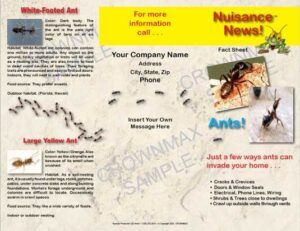Brochure or Handout: Which One is Best for Your Business?
Brochures and handouts are both marketing materials used by businesses to promote their products or services. Next to business cards and stationery, brochures, and handouts are two of the most popular printed pieces used by businesses. While both serve the same purpose, they have distinct differences that make them suitable for different situations.
Marketing is a crucial aspect of any business, and the right marketing materials can make all the difference. Brochures and handouts are two popular marketing tools that businesses use to promote their products and services. While there may be no formal rules that define the differences between brochures and handouts, experience has shown that the difference is defined partly by their physical characteristics and partly by their intended purpose.
In this article, we will delve into the differences between brochures and handouts and provide insights on when to use each.
What is a Brochure? |
What is a Handout? |
|
Link to example: 2680 – Driving You Batty Handout/ Mail Stuffer |
|
|
Brochures are a type of marketing collateral that is designed to provide detailed information about a business, its products or services, and its features and benefits. |
Handouts are marketing materials that are designed to be distributed quickly and efficiently. They are usually printed on standard paper and can be as simple as a one-page flyer |
|
Brochures are ideal for businesses that offer a wide range of products or services, as they allow for detailed information about each item to be included. They can also be used to highlight a specific product or service and its unique features and benefits. |
Handouts are ideal for businesses that need to provide quick information about their products or services. They can be used to promote a sale or a special offer or to provide information about an upcoming event. |
|
A brochure must be of top quality. Its job is to showcase a product, highlight a service or promote a company. The pages of a brochure are generally of a heavier paper weight. |
A handout usually contains a very simple message that can be conveyed quickly. It is frequently a single, unfolded printed sheet that is used to draw attention to an event, service, product, or idea. |
|
A brochure is designed to be more durable since it is kept around and referred to. The pages of a brochure are generally of a heavier paper weight. Also, any quality brochure is printed in full color and has some type of sheen from a UV or Aqueous coating. |
A handout usually has a relatively short lifespan, such as being used to announce a one-time event like a grand opening or special promotion. So, the paper used for handouts does not necessarily have to be heavy-weight paper. However, a handout can be printed on thicker paper to make it more durable if it contains information that will be referred to again and again, such as when used as a product spec sheet or instructions. |
|
A brochure almost always has printing on both sides. |
A handout most commonly has printing on one side of the paper. However, no law says handouts can’t be printed on both sides. |
|
A brochure contains folds that create multiple panels or pages of information, such as a simple C-fold or the more creative double gatefold. |
A handout is usually designed to be left flat. |
|
Brochures are offered in a variety of standard or custom sizes. |
Handouts are generally printed on 8.5″ x 11″ paper size to keep their cost low, though handouts can be created in any size that is easy to handle. |
|
Usually, brochures are distributed by salespeople only after some initial interest is shown by a potential customer. This is because more money is typically invested in a brochure than in a handout. A brochure must be of top quality since its job is to help showcase a product, highlight a service or promote a company. When making a purchase decision, your customers will compare the quality of your promotional literature to those of your competitors so brochure printing should not be skimped on. |
Depending on how they are used, handouts are sometimes referred to as handbills, leaflets, inserts, or circulars. They are commonly distributed by hand wherever customers or people may gather or pass by, such as at a trade show or other popular venue. |
Marketing materials are an essential part of any business, and brochures and handouts are two of the most popular tools used today. While both serve the same purpose, they have distinct differences that make them suitable for different situations.
Brochures are best used when a business needs to provide detailed information about its products or services, while handouts are ideal for businesses that need to provide quick and concise information. By understanding the differences between these two materials, businesses can make informed decisions on which one is right for their needs.
Brochures and Handouts have different characteristics but they are both important marketing tools that can be used by any business or organization. To view the Crownmax Brochures and Handouts forms for a specific industry, please click on one of the following links: Pest Management, HVAC Plumbing, or Lawn Care.


